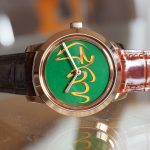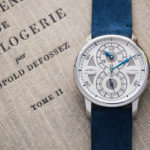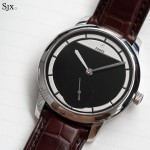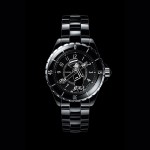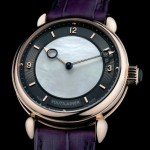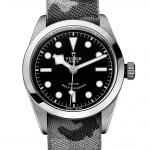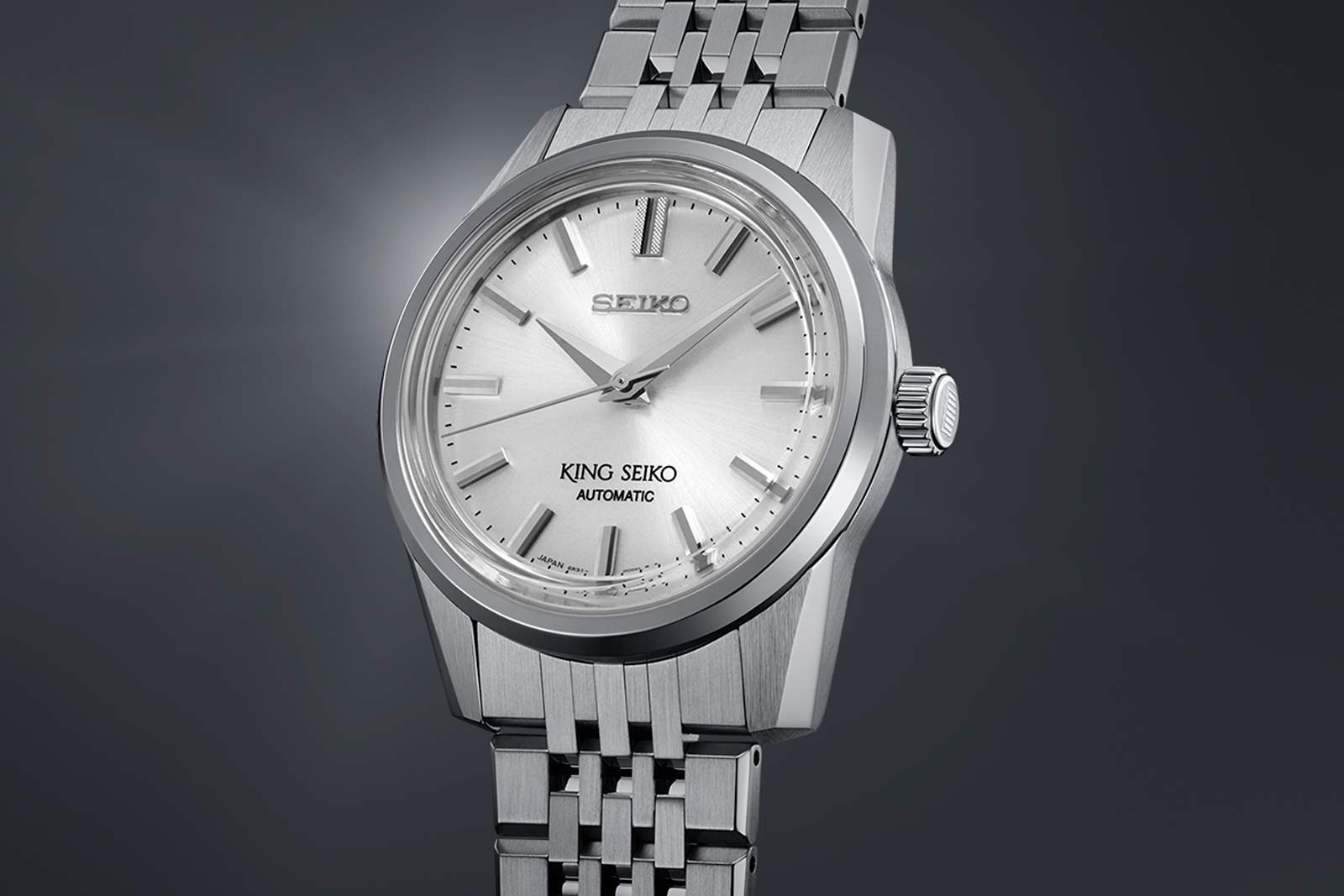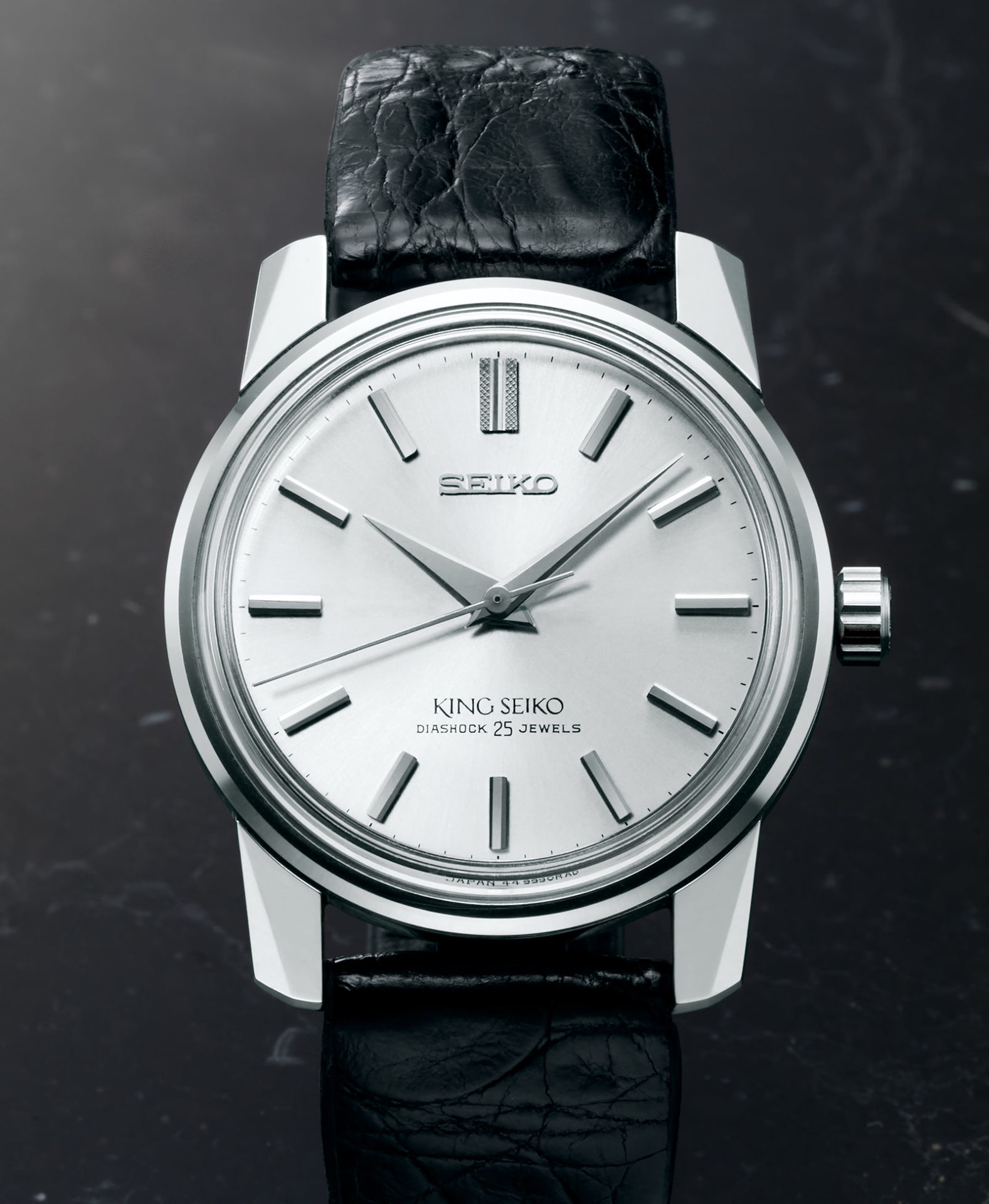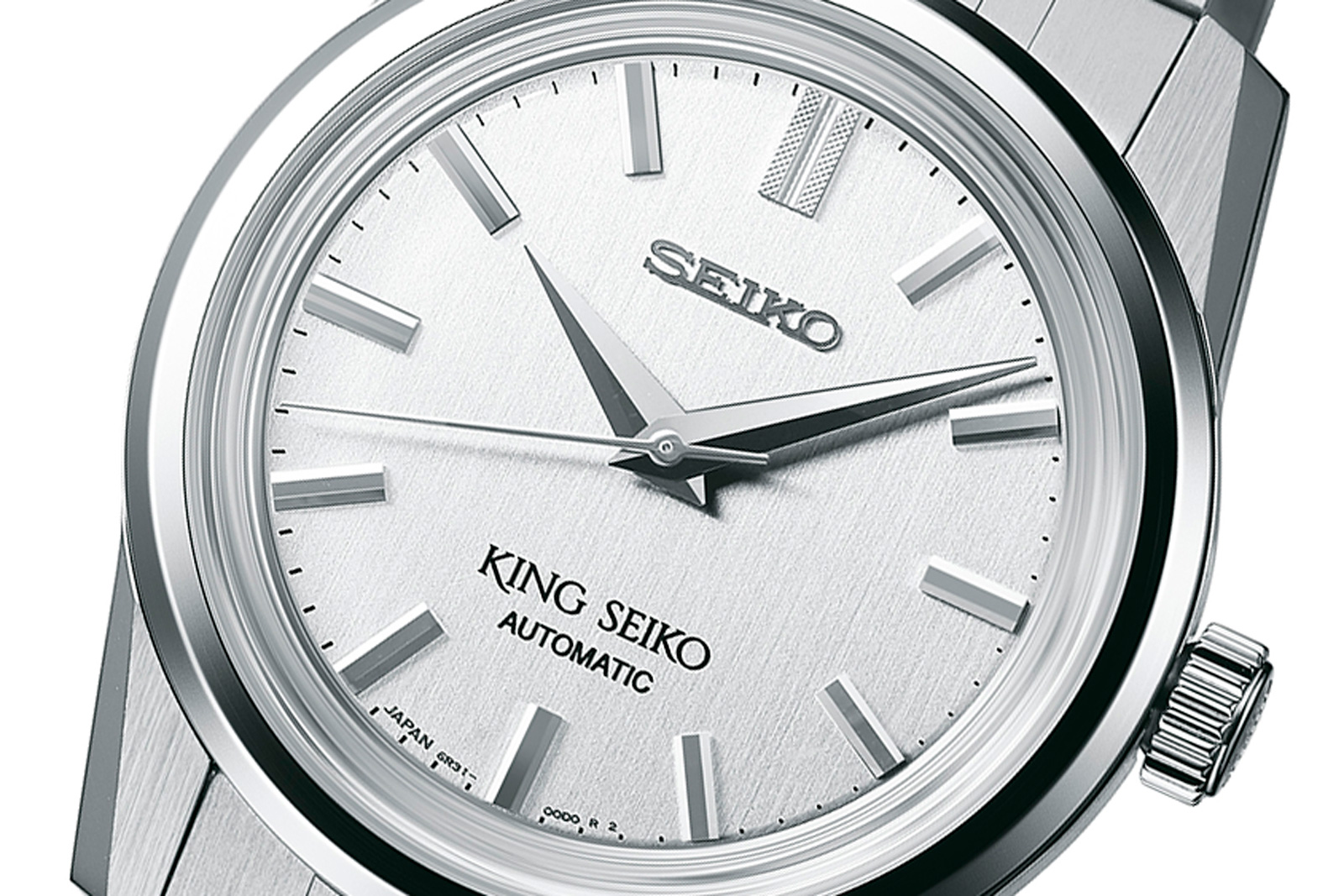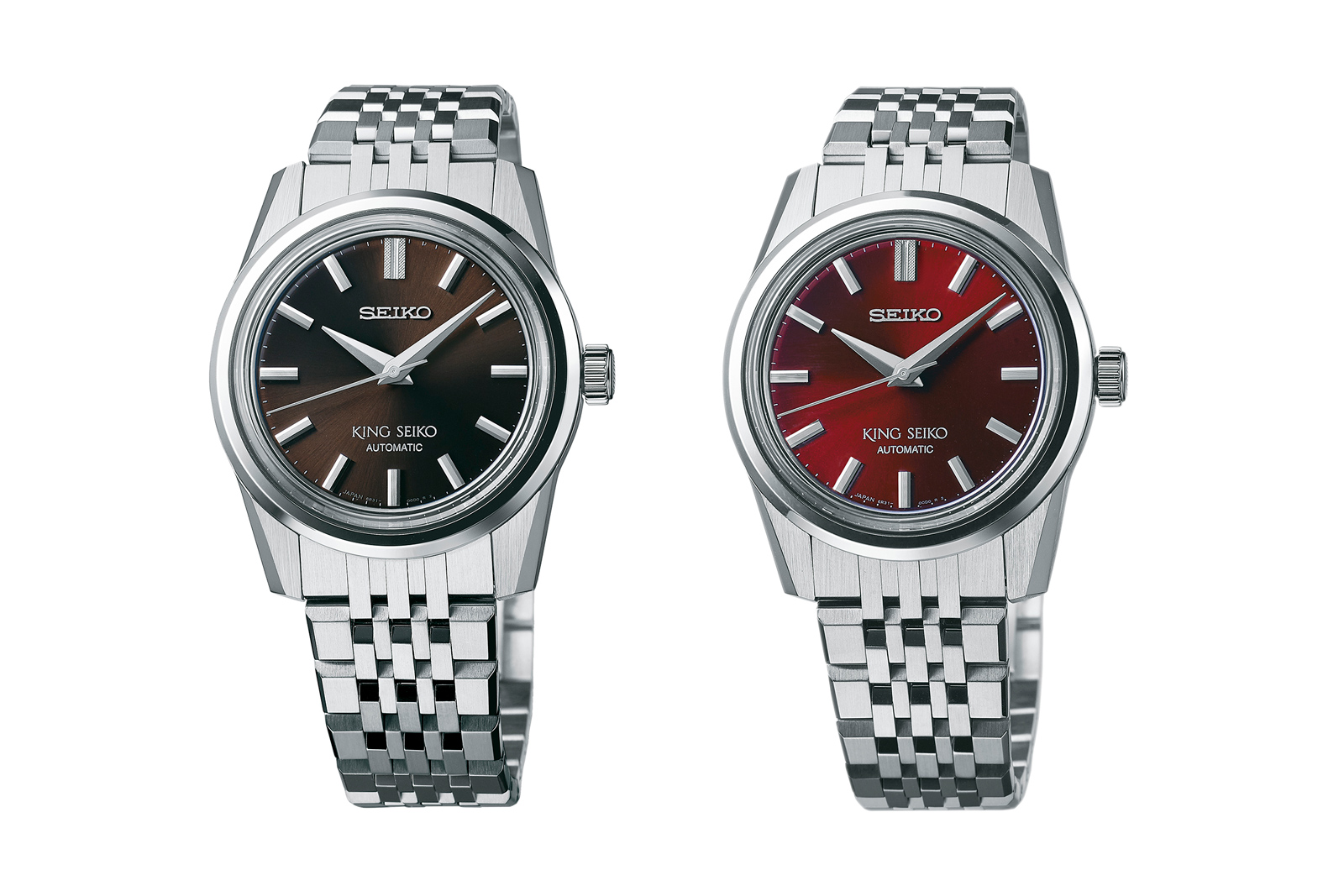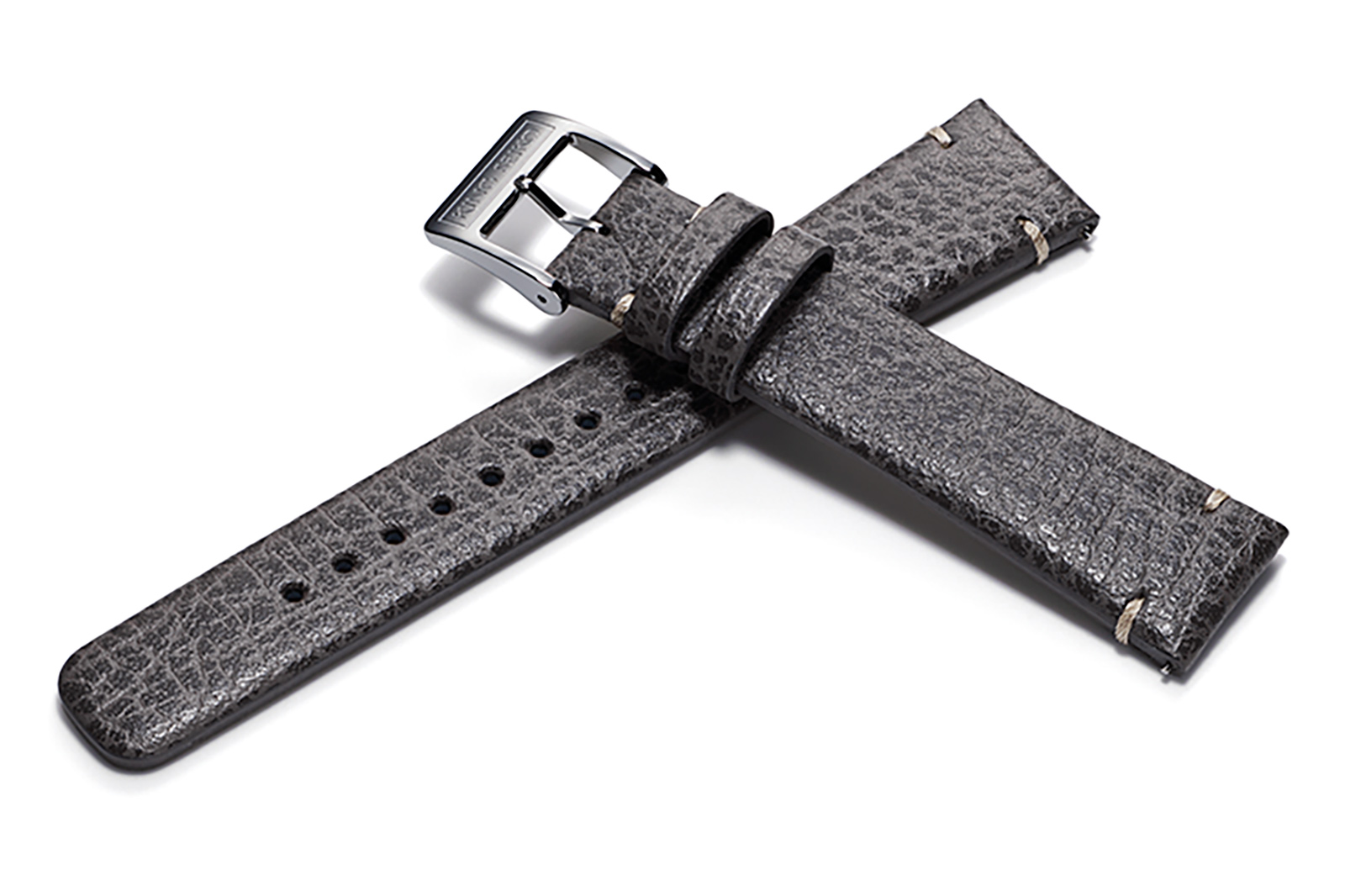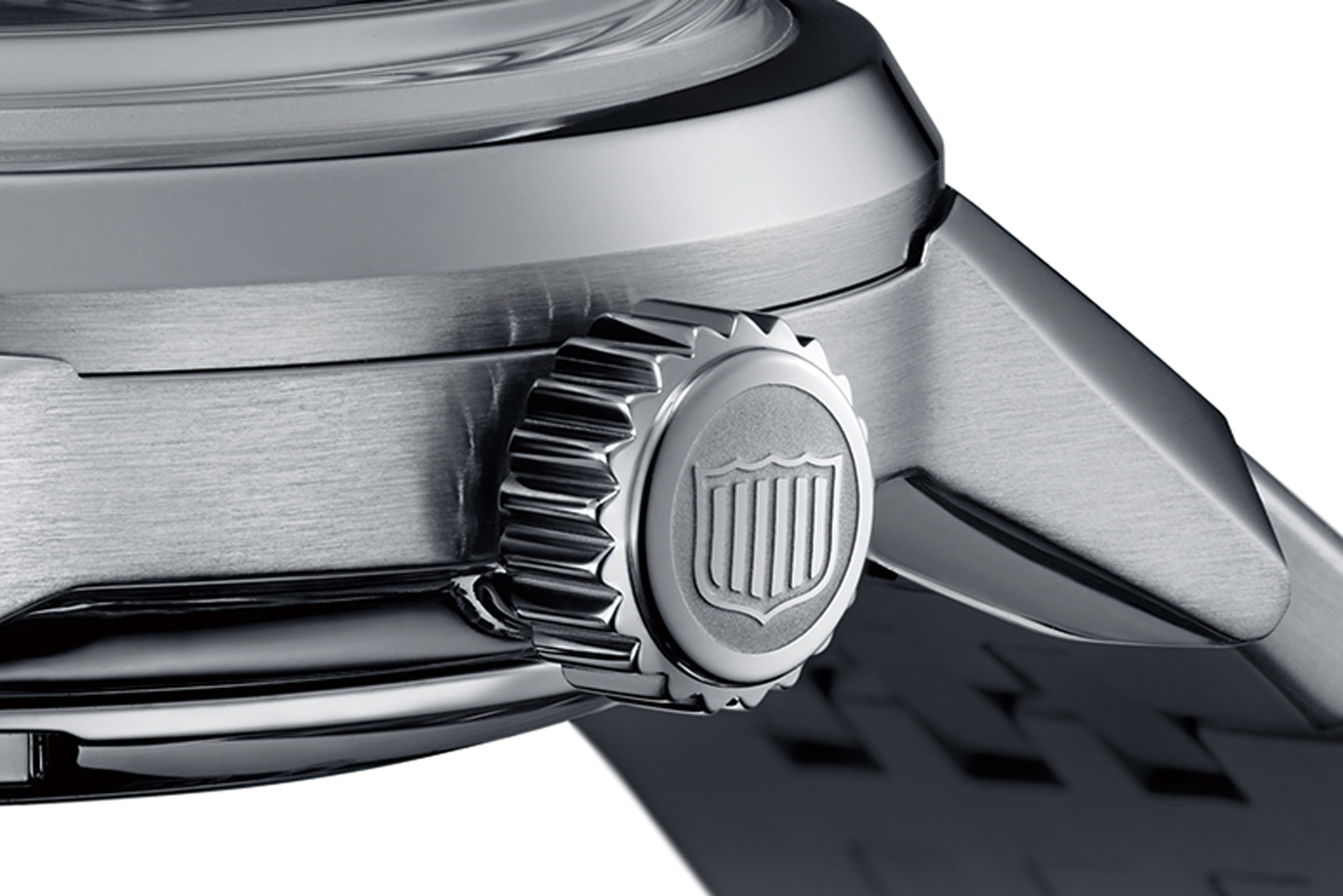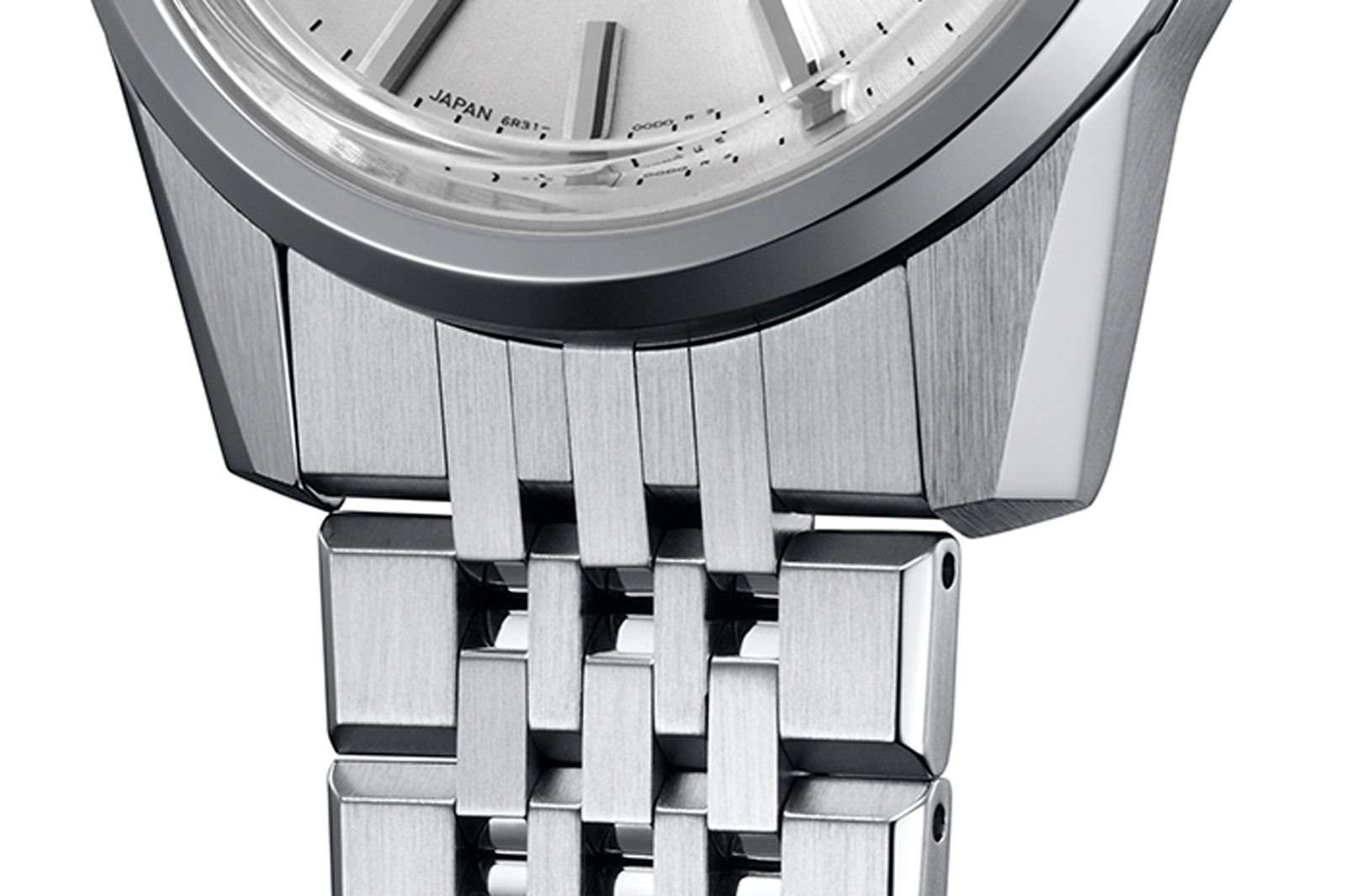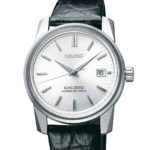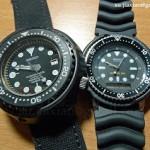Raúl Pagès Introduces the Régulateur à détente RP1
A fine movement with a detent escapement.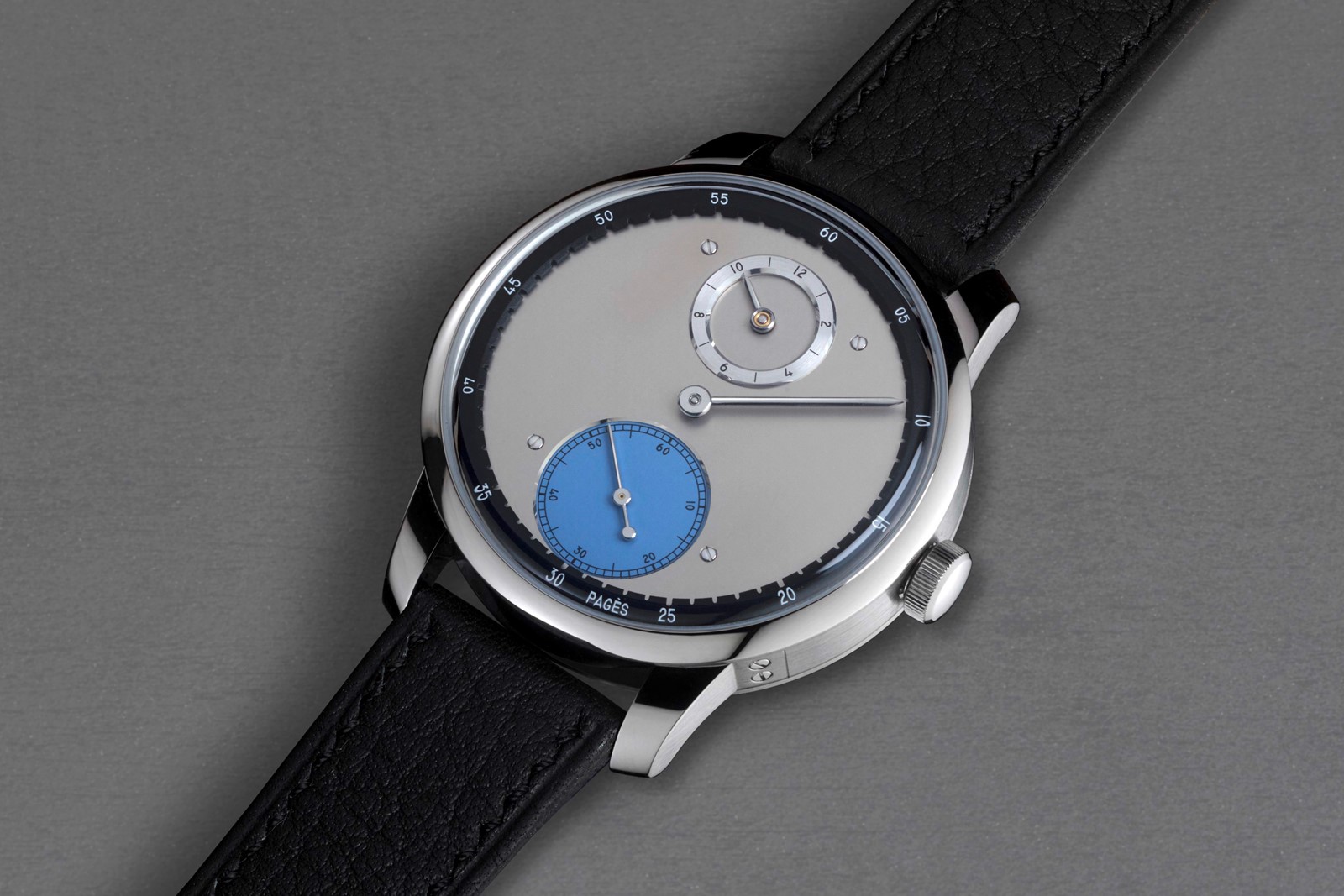
Independent watchmaker Raúl Pagès is best known for the Soberly Onyx, which housed a highly-decorated movement that was originally a humble Cyma. His latest creation however, marks a significant step forward – a movement he developed and largely manufactures himself.
A time-only watch with some fascinating details, the Régulateur à détente RP1 serves as a strong testament to Mr Pagès’ capabilities: it has a regulator display while the movement has a detent escapement of his own design. And of course, it is finished to the same high standard as his earlier work – or perhaps even better.
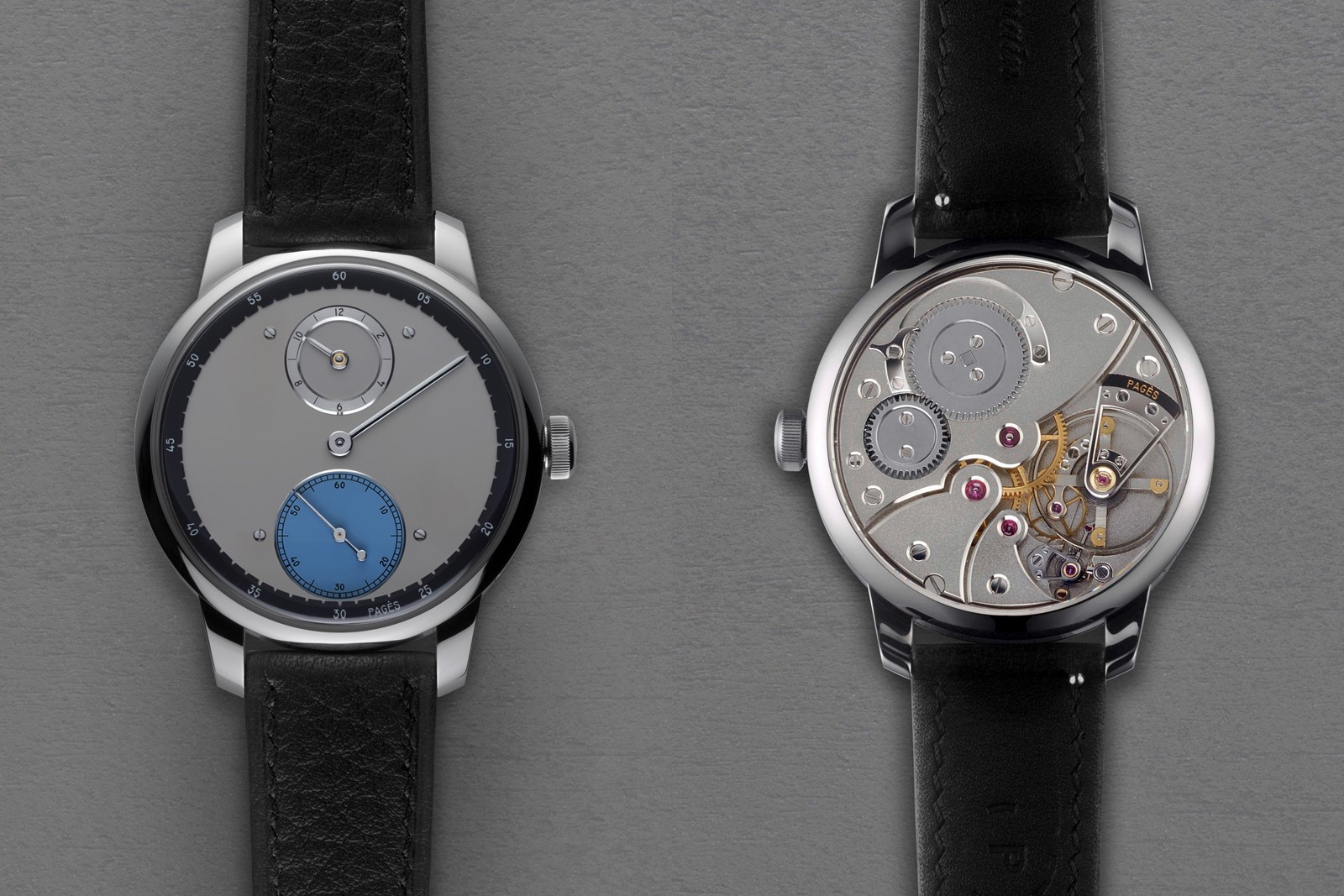
Initial thoughts
The RP1 is intriguing in many ways. It is well-executed both in terms of technical features and finish. The most obvious element that sets it apart is the detent escapement.
Due to the technical quirks in implementation, the detent escapement is an uncommon regulation mechanism that contrasts with the Swiss lever escapement that is ubiquitous even at the highest end of watchmaking. It is clear that Mr Pagès designed the movement around the escapement, as the movement bridges expose enough to proudly showcase the mechanism.
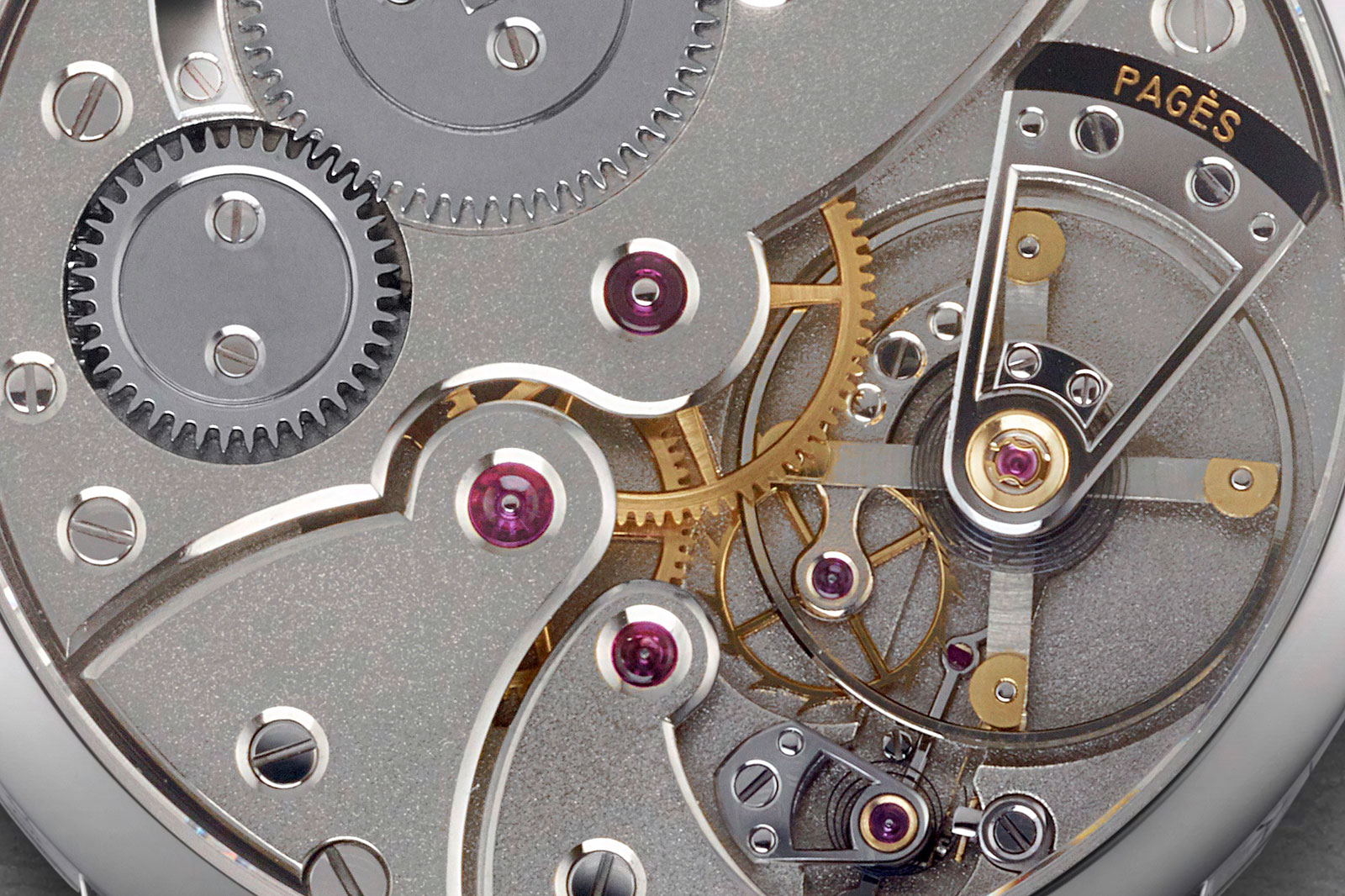
But the RP1 isn’t only about the movement, as its qualities appear all-encompassing, as demonstrated by the equally well-finished dial. Despite the simple appearance at a glance, the regulator dial is replete with fine finishing details. While the colour scheme may be too quirky for some, I wouldn’t be surprised if Mr Pages accedes to requests for custom dial colours.
The price of CHF85,000 however, is a little hard to stomach for a time-only watch – the competition is strong especially from more established independents such as Kari Voutilainen and Akrivia. That said, it may be justified by the comprehensive, artisanal finishing and unusual escapement, along with the fact that the competition enjoys such tremendous demand there’s essentially nothing available.
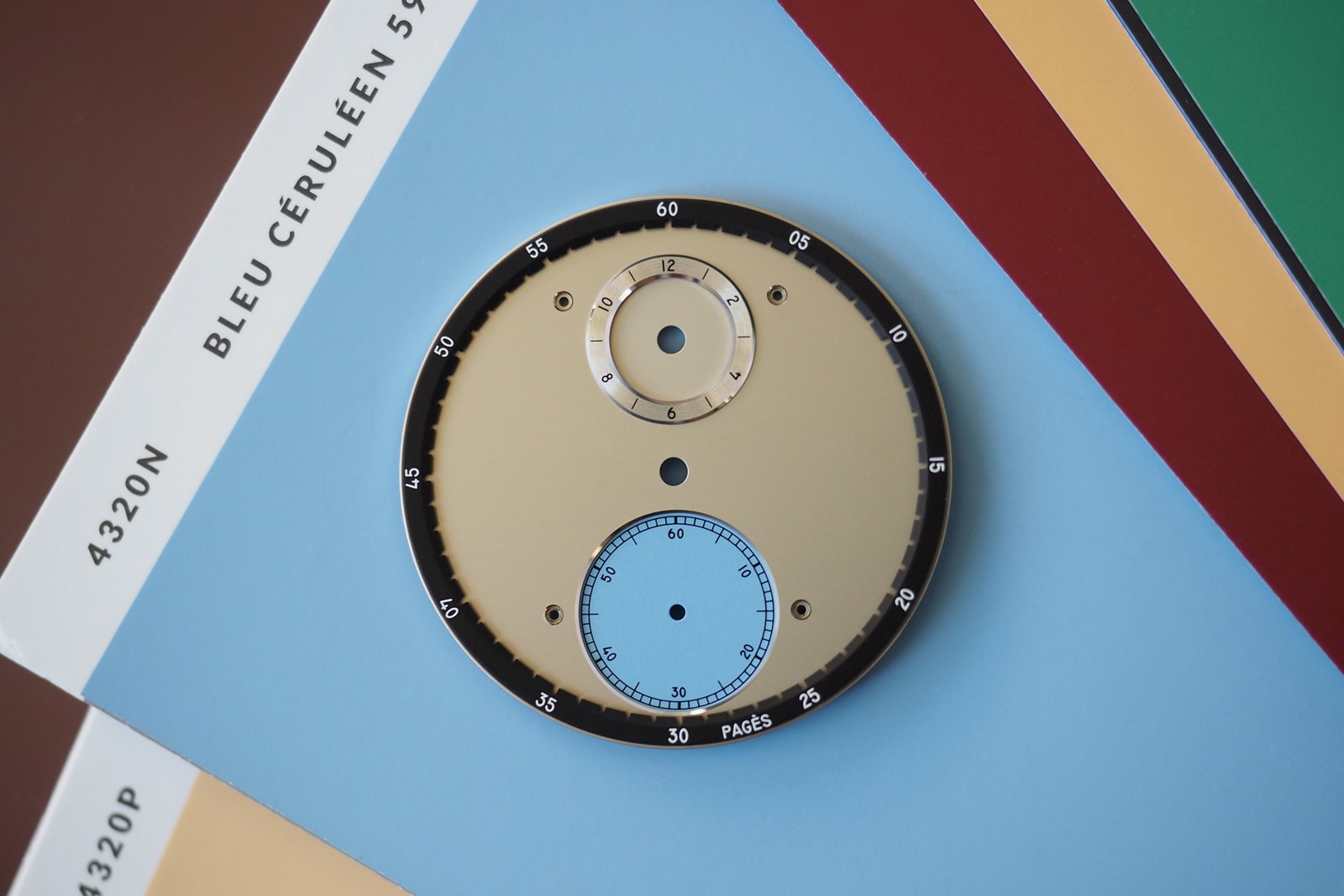
A clean regulator
The regulator dial appears simple, but has surprising depth thanks to its construction. The hours at 12 o’clock have a raised hour ring that’s brushed with polished chamfers, which contrasts the recessed seconds sub-dial at six.
Beside both sub-dials are the dial screws, which loosely resemble those found on the dials of regulator clock. Additionally, the minute track is a raised ring with grooves to represent the minutes, which fits onto the periphery of the dial.
To complement the dial, the hands are substantial – thick and rounded with chamfering along the seconds hand counterweight and bosses of the centre of the hands. However, the dial construction might be a reason for the overall thickness of the watch – while the steel case is a modest 38.5 mm wide, it is 10.2 mm high. The Soberly Onyx on the other hand, was proportionally thinner at 40 mm by 9.3 mm.
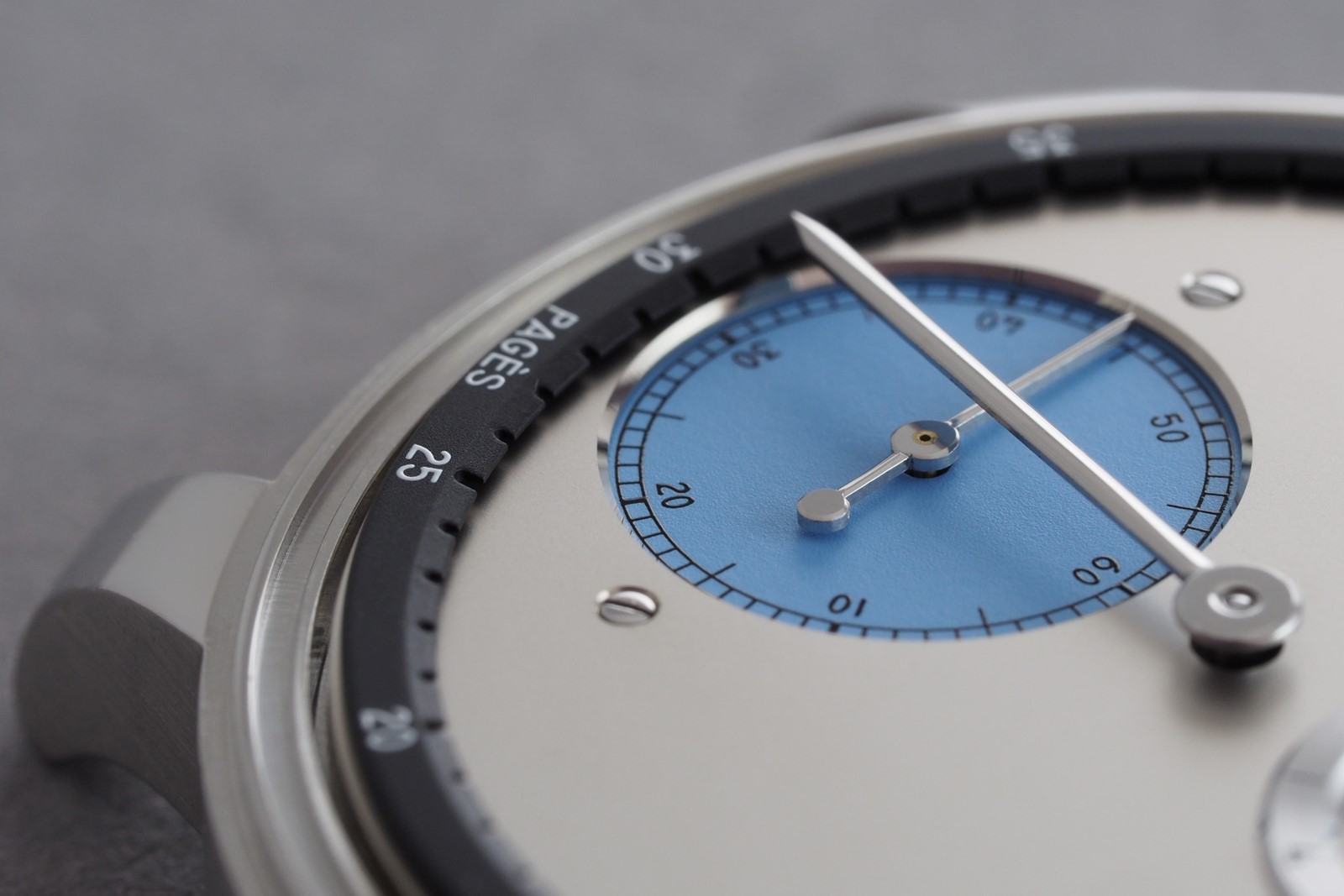
But of course, the highlight is the movement – it is Mr Pagès’ first foray into an in-house movement and it is a success. The calibre isn’t just aesthetically pleasing, it is technically interesting.
Proudly visible next to the balance wheel is the exposed detent lever mechanism – a regulation method that in theory has better timekeeping than the common Swiss lever escapement.
This is because the detent lever has a direct impulse onto the balance wheel, which reduces the amount of sliding friction that’s unavoidable in the Swiss lever design. Having direct impulse is an ideal that’s emulated in more complex escapements, such as the double wheel escapement. That said, the only downside to the detent escapement is that it isn’t self-starting: even when the movement is fully wound, the movement will not start until it is given a gentle shake to get the balance going.
By design, detent levers are asymmetrical – they only release the escape wheel once every two beats, instead of one as in a Swiss lever escapement. Thus, despite running at 2.5 Hz, or 18,000 beats per hour, the seconds hand only advances 2.5 times every second – half the rate of a comparable movement with a lever escapement.
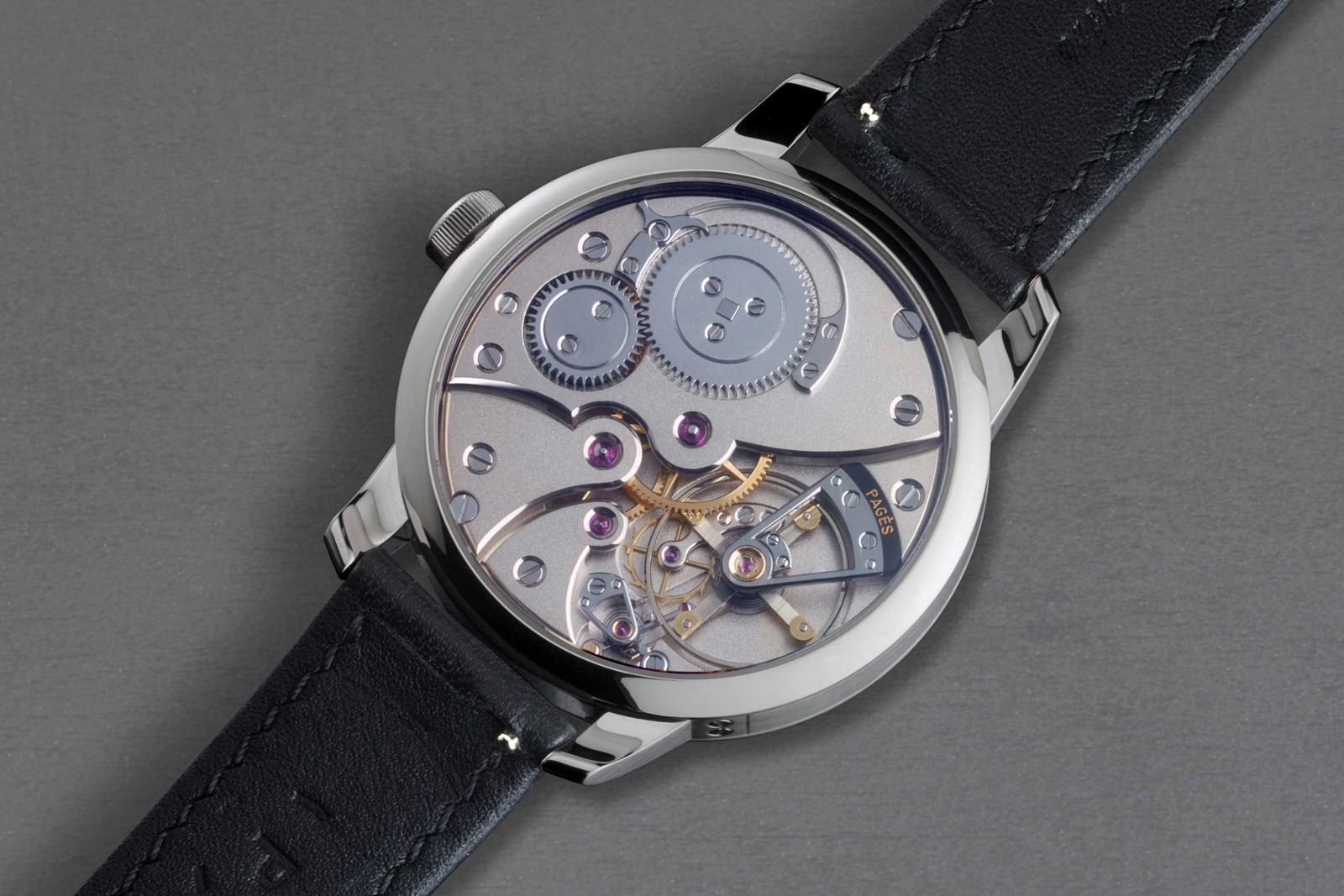
Clearly intended as the showcase Mr Pages’ decoration techniques, the bridges were designed to expose as much of the escapement as possible. Even the detent lever has its own black-polished steel cock, which is also skeletonised with inner angles. The steel detent lever itself is elaborately finished, complete with black polish and anglage throughout its length, and complemented by a gold counterweight on its end.
To further remove visual clutter around the escapement, the fourth wheel has been hidden away on the other side of the main plate – placing it under the dial – creating the illusion that the escape wheel is mechanically disconnected from the rest of the going train.
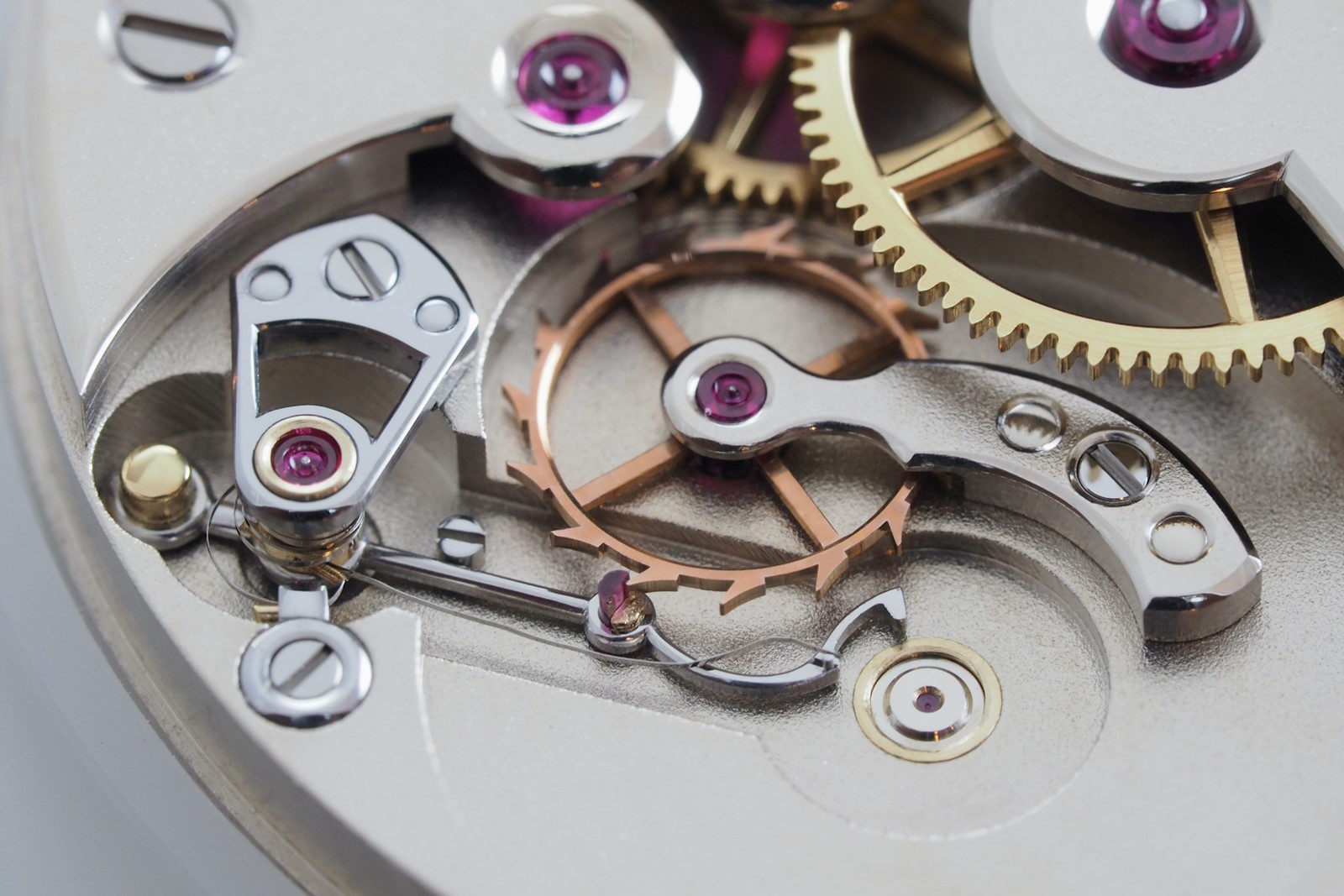
One innovation of Mr Pagès’ own is the safety feature for the escapement, which he has patented.
A safety roller is installed onto the balance wheel staff, which prevents a shock causing the unintentional release of the detent lever, which will cause the escape wheel to abruptly rotate with disastrous consequences.
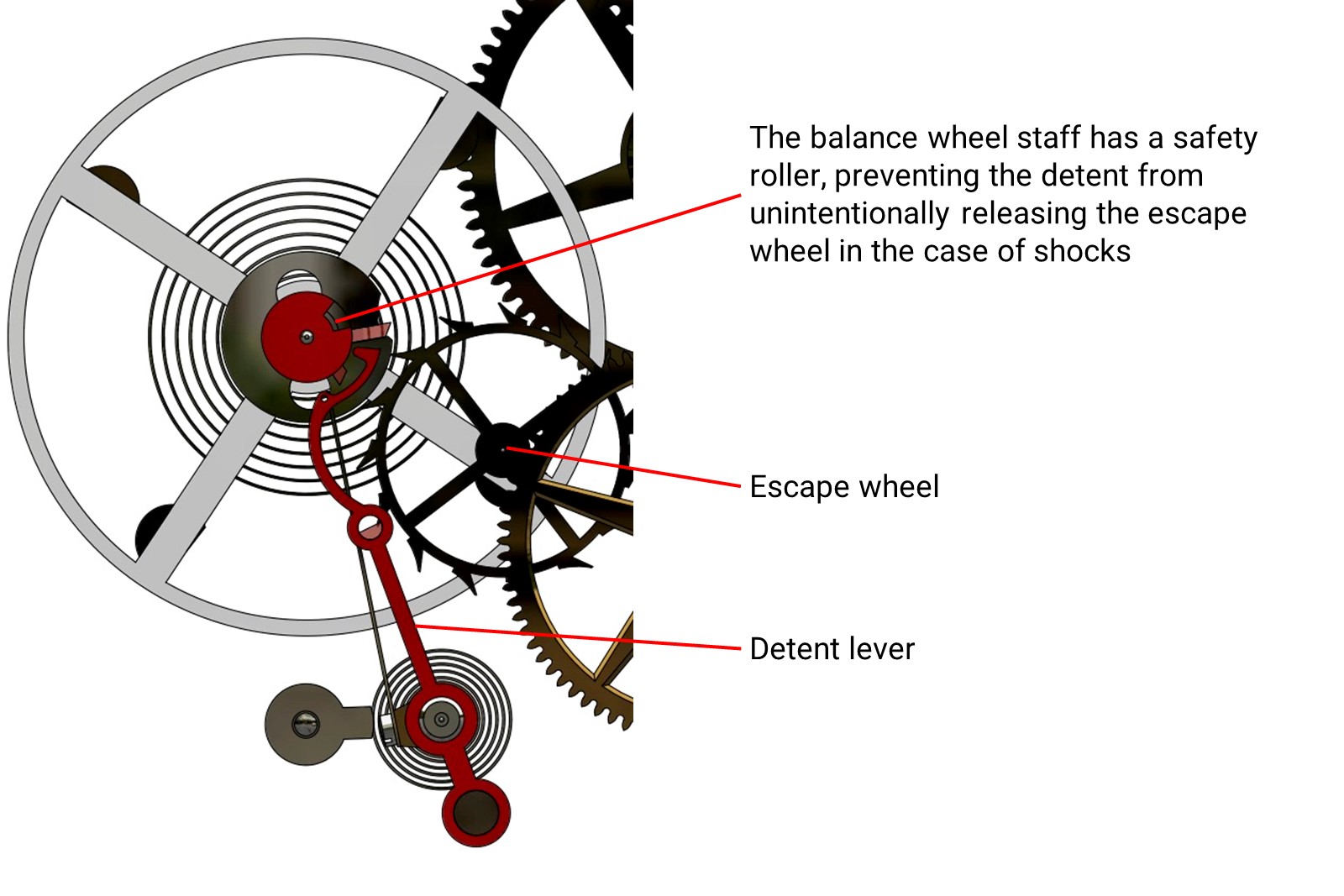
As with the Soberly Onyx, the movement of the RP1 is finished to a high standard – the frosted bridges have even, rounded anglage that incorporates sharp inward and outward angles, which is complemented by equally wide countersinks for the jewels and screw holes.
A notable upgrade over its predecessor however, are the steel parts within the RP1. The balance wheel and detent lever are supported by black-polished steel bridges that are skeletonised, creating four inward angles within each bridge while exposing as much as possible of the components below.
Furthermore, the exposed crown and ratchet wheels have been improved in their execution, with a black polish on all their flat surfaces along with individually polished teeth – not to mention the fully bevelled winding click and click spring.
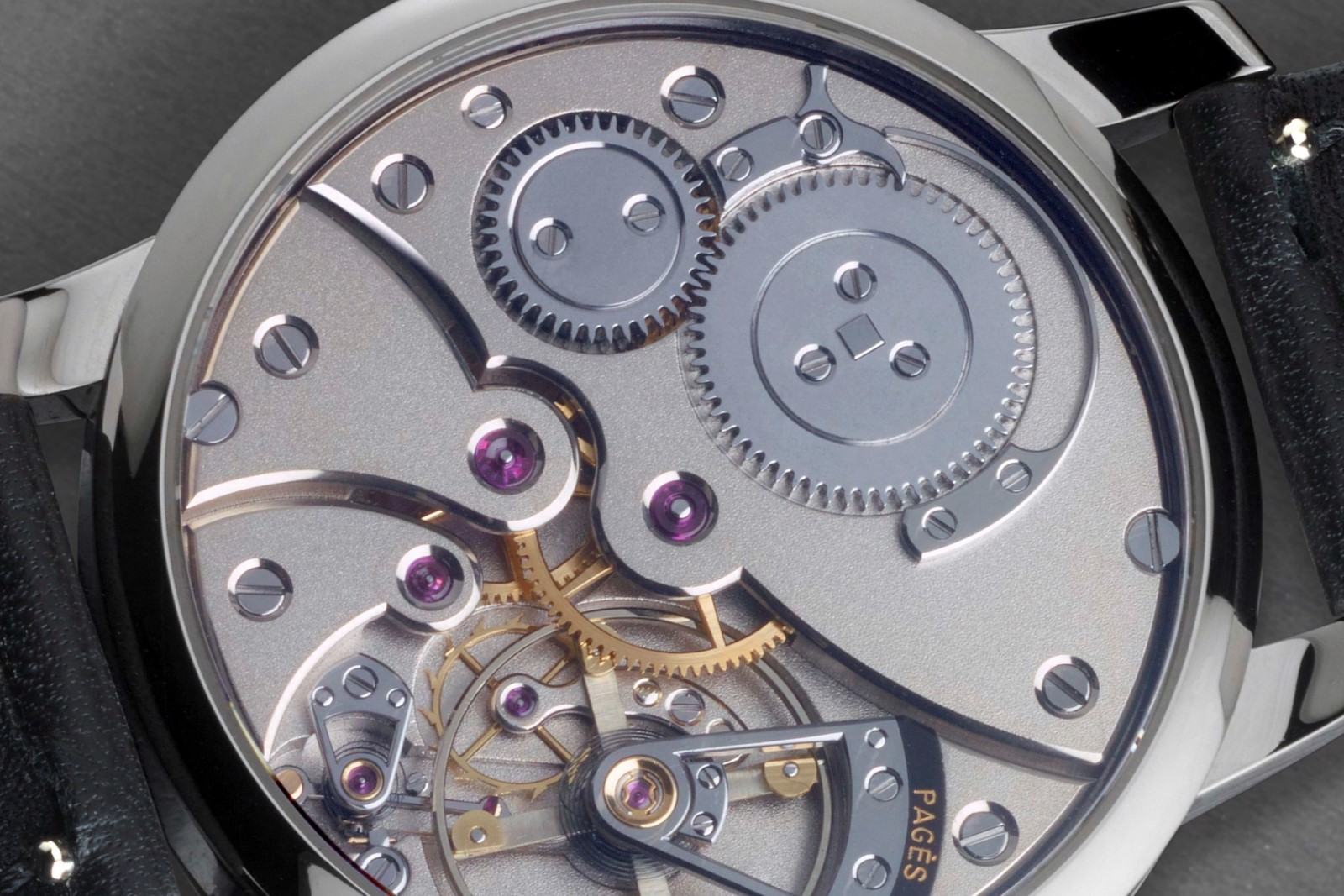
Key facts and price
Raul Pages Régulateur à détente RP1
Diameter: 38.5 mm
Height: 10.2 mm
Material: Stainless steel
Crystal: Sapphire
Water resistance: 30 m
Features: Hours, minutes and seconds
Frequency: 18,000 beats per hour (3 Hz)
Winding: Manual
Power reserve: 47 hours
Strap: Leather strap
Availability: Direct from Raul Pages, with production of 5-6 pieces a year and a lead time of 12-15 months
Price: CHF85,000 without taxes
For more, visit Pageswatches.com.
Back to top.

